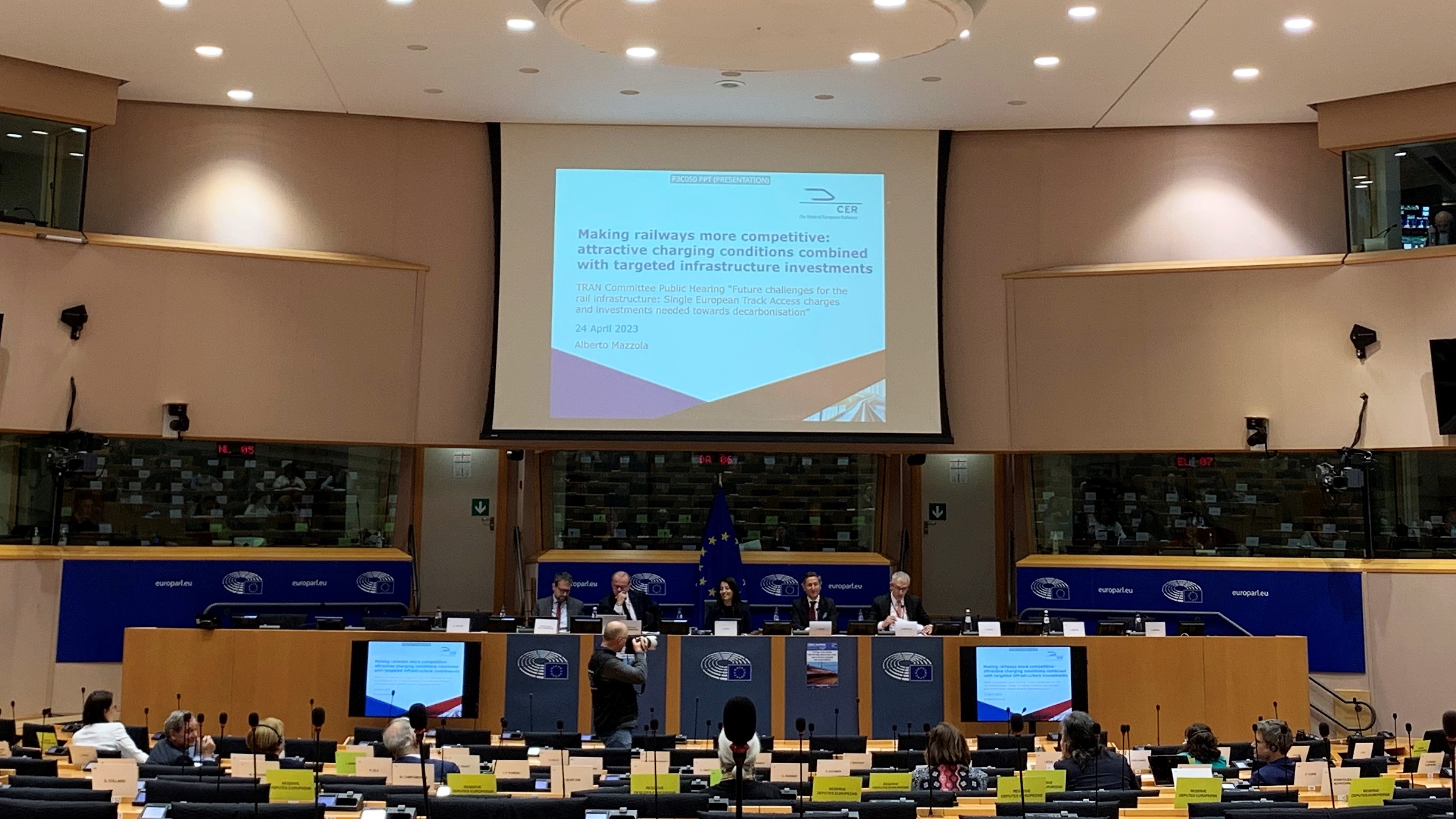Attractive Track Access Charges in rail pave the way for decarbonisation of transport
Participants of today’s public hearing in the European Parliament on “Future challenges for the rail infrastructure” heard from the Community of European Railway and Infrastructure Companies’ (CER) Executive Director Alberto Mazzola on the absolute necessity of investment in infrastructure and that Track Access Charges (TACs) are key to creating a level playing field for all transport modes. The reduction of rail TACs must be accompanied by proper compensation for infrastructure managers
Members of the European Parliament’s Committee on Transport and Tourism (TRAN Committee) were informed that Track Access Charges (TACs) constitute an important cost element of Railway Undertakings’ (RUs) business and are the primary revenue stream of rail Infrastructure Managers (IMs). The competitiveness of rail versus other transport modes depends very much on attractive charging conditions. TACs vary substantially among EU Member States as state budget contributions differ, but a lower level of TACs will benefit the sector. Nevertheless, track access charges must be economically viable for the IM and provide the possibility to steer market demand to where there is potential for growth.
In terms of the reduction in transport Greenhouse Gas (GHG) emissions outlined in both the European Green Deal and the Smart and Sustainable Mobility Strategy, and with reference to ambitious targets in high-speed rail, rail passenger and freight services, investment in rail infrastructure and digitalisation is crucial. Currently, there is a substantial lack of infrastructure and this needs to be addressed. In view of the Multiannual Financial Framework (MFF) mid-term review and the discussions on the future Connecting Europe Facility, sufficient funding is needed to make the Trans-European Network for Transport (TEN-T) a reality.
CER Executive Director Alberto Mazzola said: “Modal shift remains key to transport decarbonisation. Rail stands out with low externalities, being the most sustainable and energy-efficient transport mode. TACs are key to creating a level playing field amongst modes and lowering them must come hand-in-hand with proper compensation to the Infrastructure Managers. In parallel, we need to ensure that investments in rail are adequate, and that the Connecting Europe Facility 3 is of a sufficient size to fund rail infrastructure projects and the completion of the TEN-T Networks.”

